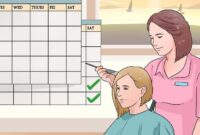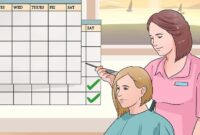How To Dye Your Hair Pink – smartesthairstyles.com – Dyeing your hair pink is a great way to switch up your style. It can be as subtle as a rose gold ombre or as vibrant as an all over pink. The process is simple, but it takes more than just slapping pink dye on your hair; You will most likely need to bleach your hair first. Aftercare is just as important — if you don’t take good care of your hair, the color will quickly fade.
- Bleach your hair

Start with healthy hair. Damaged hair does not take color very well. Also, the bleaching process damages your hair to some extent, so you want it to be as healthy as possible. If you try to bleach already damaged hair, you will only damage it more.
If you have damaged hair but still want to dye your hair pink, consider using an ombre instead. This way you will not bleach all your hair.
It would be best if your hair hasn’t been washed for a few days before you start bleaching. This may sound gross, but the accumulated oils help protect your hair.
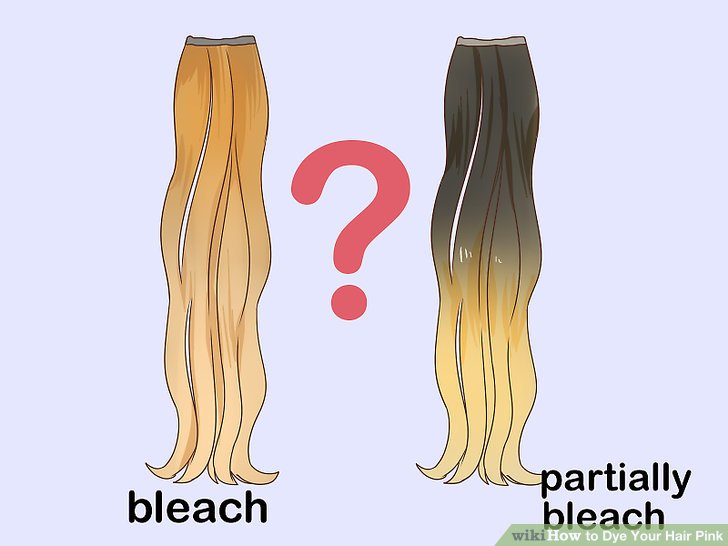
Decide if you want to bleach all or part of your hair. If you have red or blonde hair, you can bleach all of your hair. However, if you have dark brown or black hair, consider an ombre instead. This way you won’t have to touch up your color as often because the roots will be their natural color. In the end it does less harm.
If you have light hair between level 8 and 10, you may not need to bleach it at all. Talk to a stylist to find out what stage your hair color is.

Protect your skin, clothing and work surface. Put on an old shirt or cover it with a dye robe or an old towel. Apply petroleum jelly to the skin around the hairline, neck, and ears. Cover your floor and counter with newspaper, then don a pair of plastic hair dye gloves.
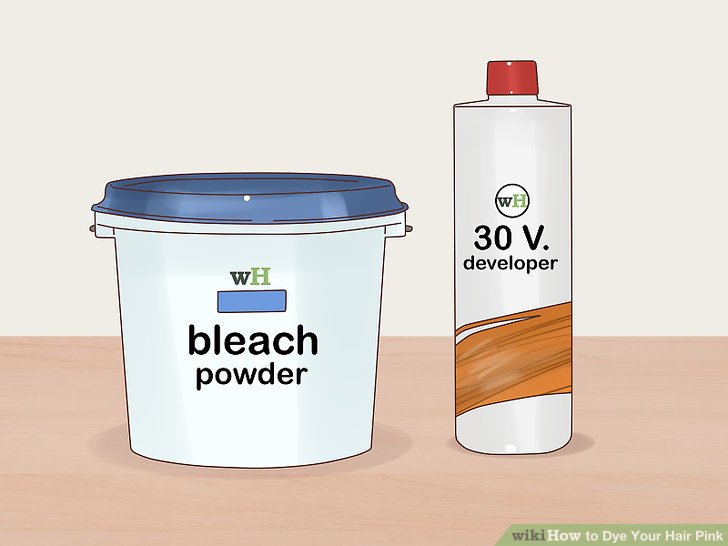
Prepare your bleach with the right developer. High levels of developer lighten the hair faster, but are also more damaging. In general, if you have light hair, a 10 or 20 volume developer should be enough. If you have dark colored hair, a 30 volume developer would be a better choice.
Every 10 level with the volume developers can lighten your hair by another level.
Avoid using a 40 volume developer. They act very quickly and are very harmful.
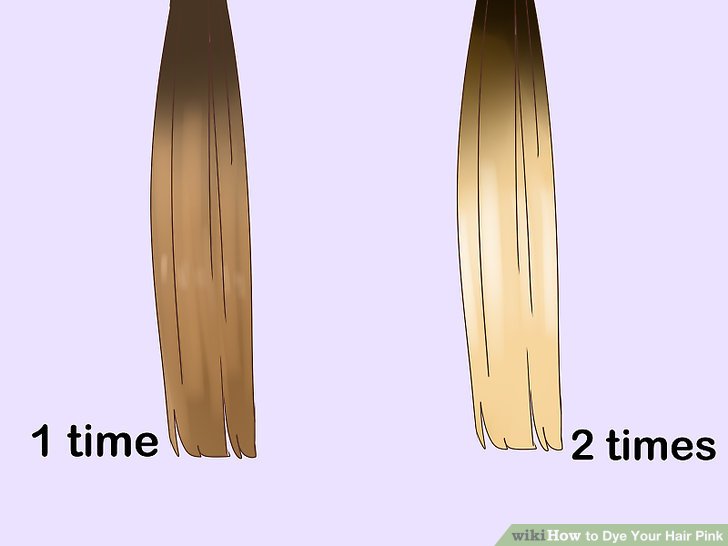
Run a string test. While this is not strictly required, it is highly recommended. The times on the packaging are guidelines. This means your hair can bleach faster than the recommended time for your starting hair color and desired brightness. However, never exceed the recommended bleaching time. Select a strand in an inconspicuous place, e.g. B. in the neck or behind the ear.
If your hair is not light enough, you will need to do a second bleaching session. If it’s healthy, you can do it the same day. However, if your hair is damaged, you should wait a few weeks before bleaching it again.
You could also pull a small strand of hair from the back of your head – your hair is usually darker here.
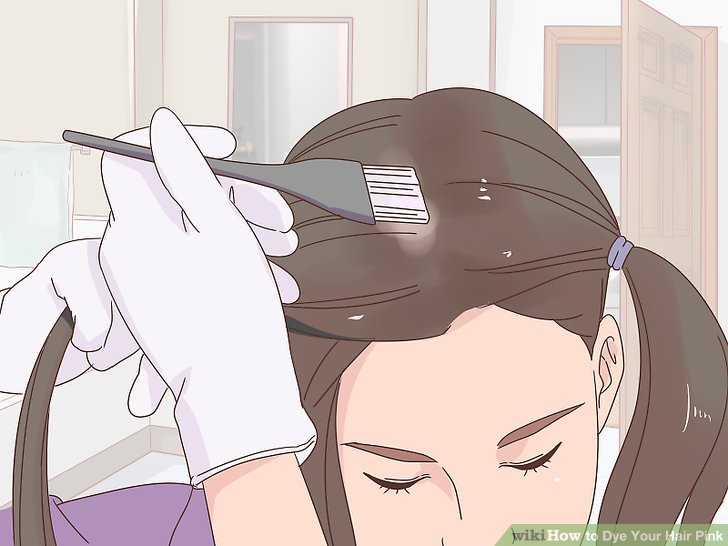
Bleach your hair while it’s dry, starting at the ends. Divide your hair into 4 sections. Working 1 section at a time, apply the bleach to 1.3-2.5 cm (⁄2-1 inch) thin strands of hair, starting at the ends and ending in the middle. Once you’ve applied the bleach to all of your hair, go back through your hair and apply the bleach to the roots.
The heat from your scalp will cause the bleach to be processed faster than the bleach on the ends of your hair. You must apply the bleach to your roots last.
Be thorough as you apply the bleach to each section. It can be particularly easy to miss spots along the back of your hair, so pay close attention when bleaching hair there.
If you go for pastel pink hair, try bleaching your hair on level 10 or platinum.
Be careful when bleaching hair that is already colored. Your hair may not bleach evenly and the dye may react with the bleach.
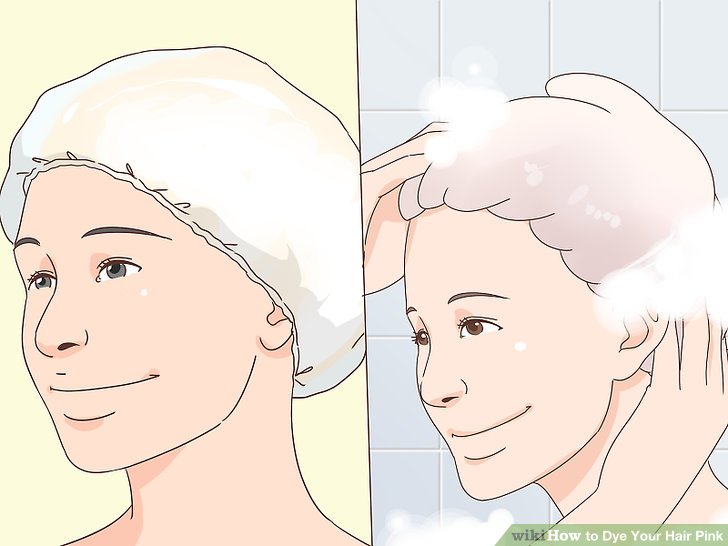
Bleach your hair and then wash it with shampoo. Again, each hair reacts differently to bleaching. Your hair may reach the desired level of brightness sooner than stated on the packaging. Once your hair has reached the desired lightness, wash out the bleach with shampoo. If the time is up and your hair still has n’t turned the right color, wash out the bleach anyway and schedule a second treatment.
Check for signs of damage from the bleach, such as excessive peeling or breakage. If you see these signs, wait a few weeks before bleaching your hair again.
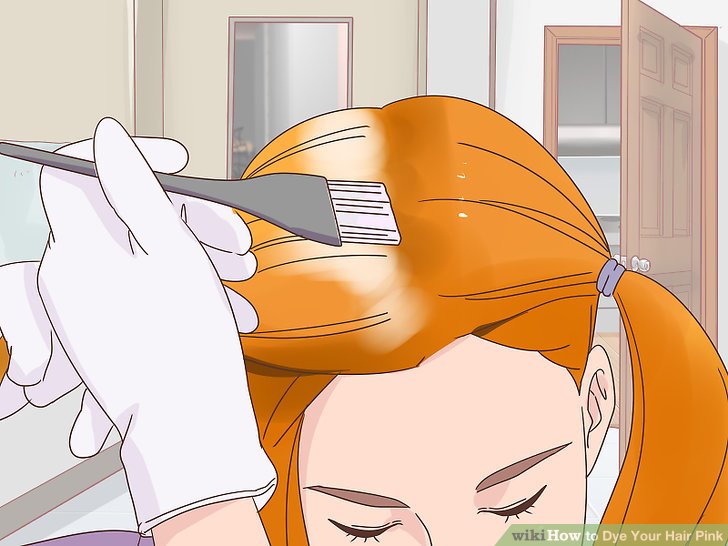
If necessary, bleach your hair a second time. Sometimes a single bleaching session is not enough to bring your hair to the right level. If you have brown hair and want to go pastel pink, you may need to bleach it a second time. However, keep in mind that it may not be possible to bleach very dark hair to a light blonde; You may have to settle for a darker shade of pink.
If your hair is healthy, you can bleach it again the same day. If it is damaged, wait a week or two before bleaching again.
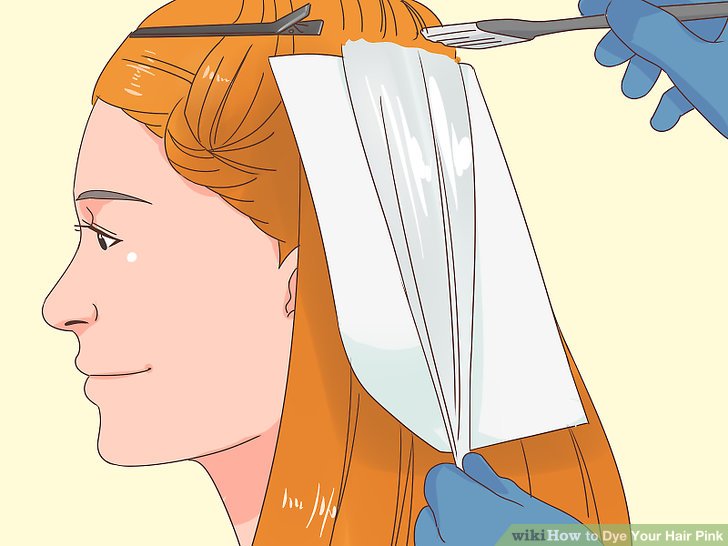
Have a professional bleach your hair when it is dark. Bleaching is the most damaging part of the dyeing process. A lot can go wrong, from patchy, uneven work to damaged, fried hair. While you can easily bleach blonde and light brown hair at home with a kit, dark brown and black hair requires far more precision and care. If you have dark hair, it’s best to have it done professionally.
Hear what the stylist tells you. If the stylist says they can’t bleach your hair any further, don’t try.
- Tone your hair
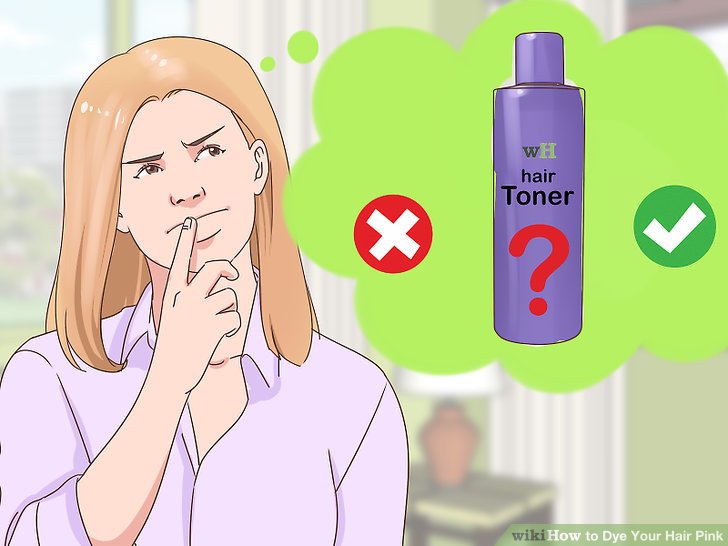
Determine whether or not your hair needs to be colored. Most hair turns yellow or orange when bleached. If you’re dying your hair a warm shade of pink, like salmon, you don’t need to tone it—just be aware that the pink will end up being warmer than what the bottle says. However, if you want a cool or pastel shade of pink, you need to tone your hair to get it as white/silver as possible.
A cool pink is anything that contains shades of blue or purple.
How white or silver your hair turns out after toning depends on how easily you managed to bleach it. Orange hair becomes more silvery while yellow hair becomes more white.
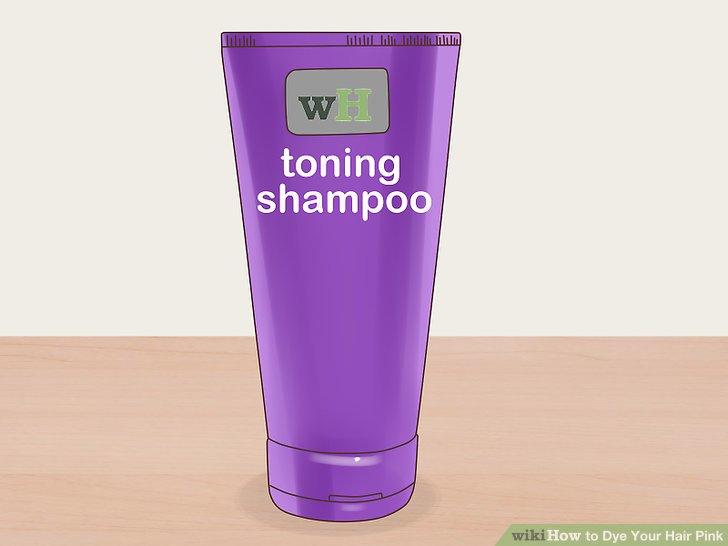
Get a bottle of toning shampoo. A toning shampoo is a special type of shampoo that neutralizes the yellow or orange tones in your hair, making it more silver/neutral. You can also make your own toning shampoo by mixing some blue or purple hair dye into a white conditioner; You want a pale purple/pastel blue color.
If your hair has turned yellow, opt for a purple-tinted toning shampoo. If your hair has turned orange, opt for a blue-tinted toning shampoo instead.
Store-bought toning shampoo comes in a variety of strengths, so you’ll need to experiment. If you make it yourself, you can adjust the proportions and get the right strength.
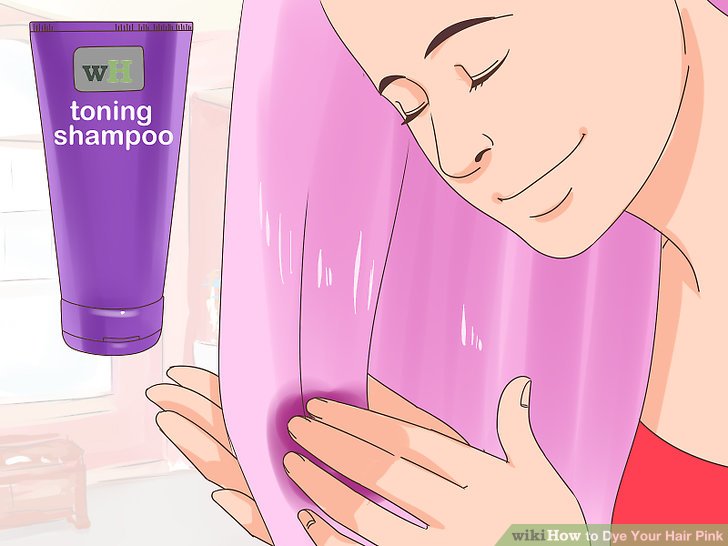
Apply the product to wet or damp hair in the shower. You can apply the shampoo to your hair as usual. Squeeze a small amount into your hands and gently work through your hair from root to tip.
Make sure you saturate your hair completely.
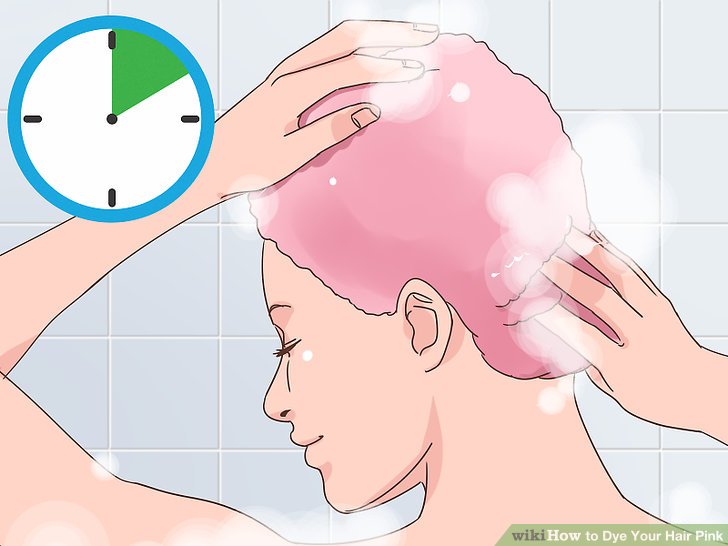
Leave the shampoo in your hair for the recommended time on the bottle. This can take between 5 and 10 minutes. If you made your own toner using hair dye and conditioner, leave it on for 2-5 minutes instead. However, do not leave it on for too long or your hair will turn blue or purple.
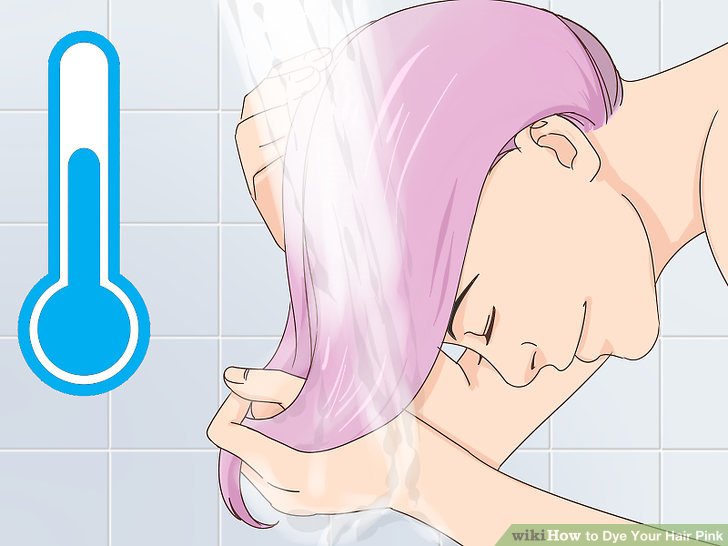
Wash off the shampoo with cold water. If color residue remains in your hair afterwards, use a color safe shampoo afterwards. Allow your hair to air dry completely or use a blow dryer to speed up the process.
Toner can turn your hair pink. If you like the color it turned out, then you’re done!
- Dyeing your hair
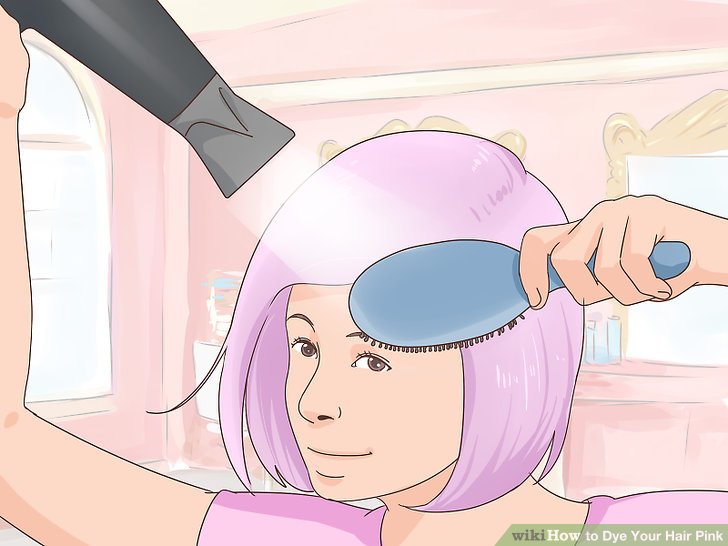
Start with clean, dry hair. Wash your hair with shampoo. Rinse and then dry completely with a hair dryer or air dry. Don’t use conditioner this time, as it will make it harder for the color to adhere to your hair.
It is best to wait a few days between bleaching and coloring your hair. Both processes are tough, so it would be a good idea to give your hair a few days of rest.
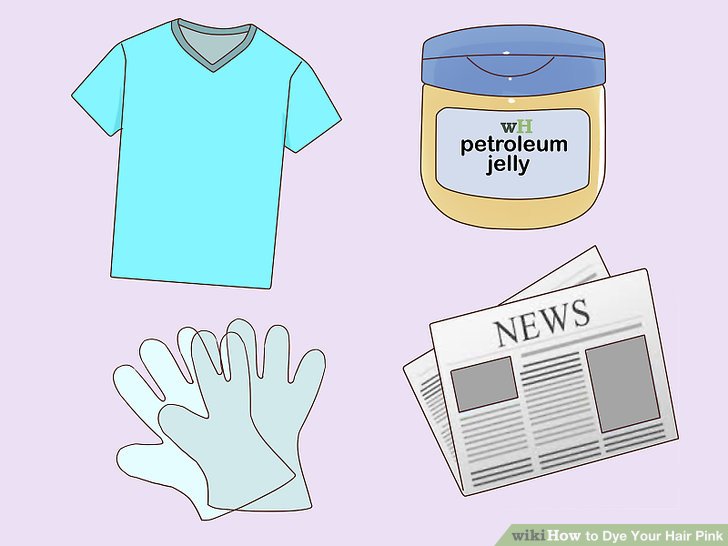
Protect your skin, clothes and counter from stains. Put on an old shirt and drape a dyeing cloak or an old towel around your shoulders. Cover your counter with newspaper or plastic bags. Apply some petroleum jelly around your ears and hairline, then put on a pair of plastic dye gloves.
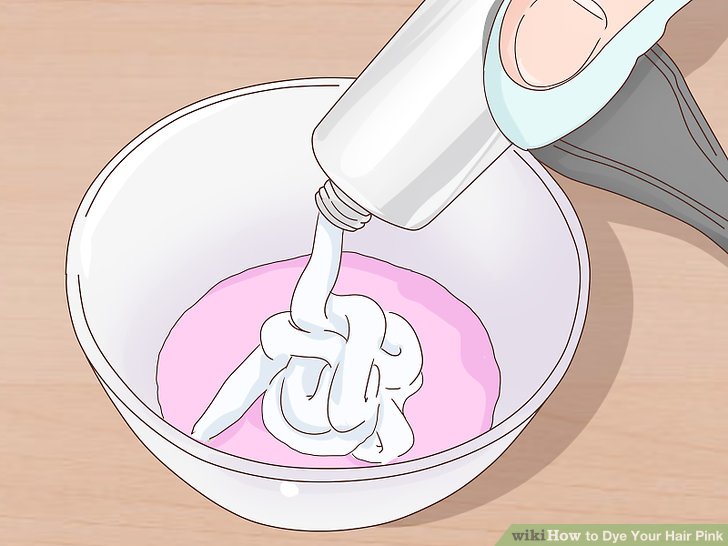
Mix pink dye with white conditioner if instructions call for it. Pour enough white conditioner to saturate your hair into a nonmetallic bowl. Add some pink hair dye, then stir with a plastic spoon until the color is consistent. Keep adding colorant/conditioner until you reach your desired shade.
The type of conditioner you use doesn’t matter, but it must be white.
If you have n’t colored your hair , pay attention to what shade of pink you start with. In the end it becomes more yellow/orange.
If you want an extra dimension, prepare 2 to 3 different shades of pink in separate bowls. For example, you could prepare Atomic Pink, Cupcake Pink, and Virgin Rose Dye.
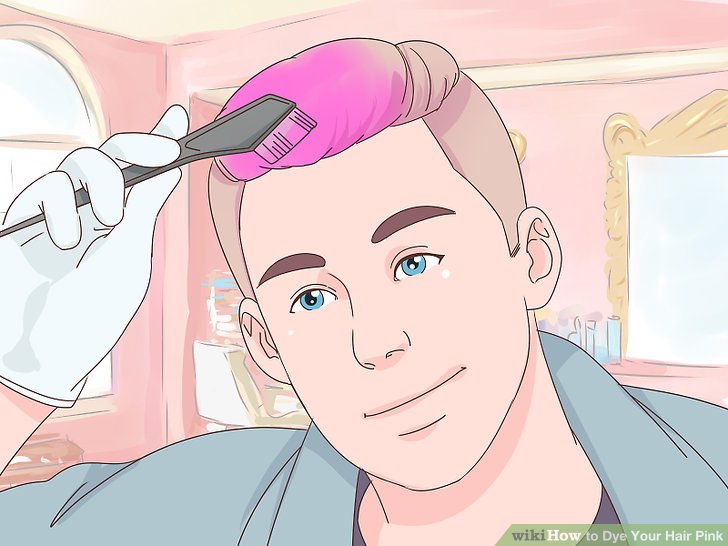
Apply the color to your hair in sections. Divide your hair into 4 sections. Use a tint brush to blend the color or color and conditioner mixture to 1/2 – 1 inchapply thin strands of hair. If you have prepared several shades of pink, randomly apply them to your hair. You can also use the balayage technique instead to make your hair look more dimensional and realistic and less like a wig.
Follow your hair’s natural light and dark pattern. Use darker shades of pink in the darker areas and lighter shades of pink in the lighter areas, especially around your face.
Consider doing a strand test first. This way you can correct the color before committing to it.
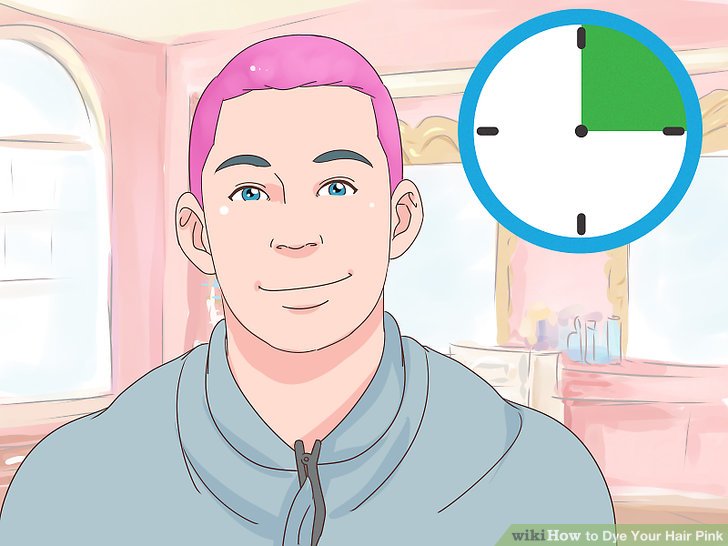
Leave the color on for the time recommended on the packaging. In most cases you will have to wait 15 to 20 minutes. Some types of gel-based dyes, like Manic Panic, can last up to 1 hour; this results in a lighter color.
Do not leave brightening dyes or dyes containing bleach on for longer than the recommended time.
Cover your hair with a plastic shower cap. This will allow the color to develop better and keep your environment clean.
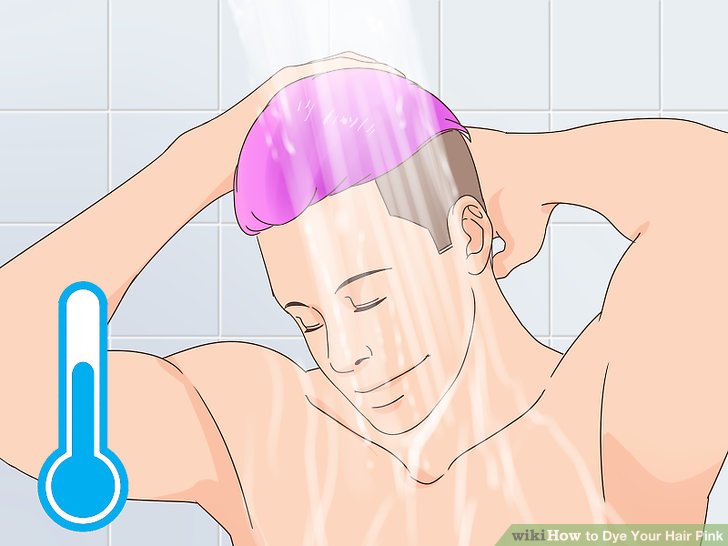
Rinse your hair with cool water and then apply conditioner. Rinse the dye out of your hair with cold water. Once the water runs clear, apply conditioner to your hair. Wait 2-3 minutes, then rinse with cold water to seal the cuticles. Do not use shampoo for at least 3 days.
Follow with a vinegar rinse to lock in the color and let your hair shine. Leave the vinegar in your hair for 2-3 minutes before rinsing it out. If your hair smells like vinegar, use a leave-in conditioner or other product to mask the odor.
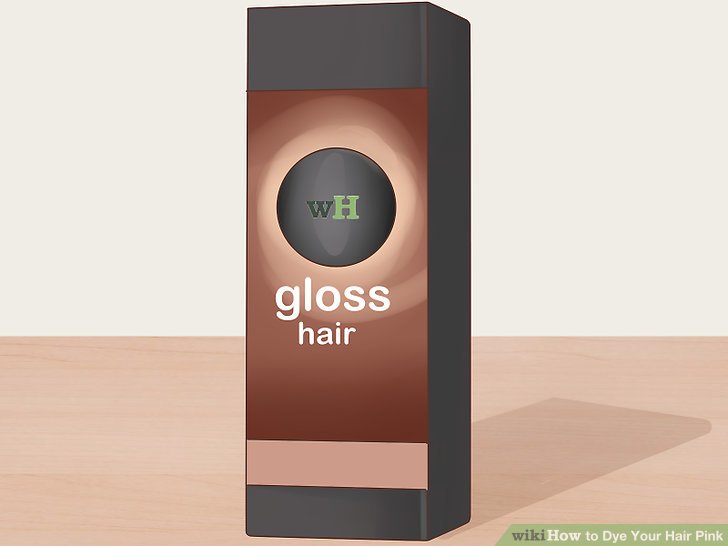
Use a shine when you want to add extra shine to your hair. Choose a gloss with a pink shade and apply it right after rinsing the color out of your hair. Leave the shine in your hair for 10 minutes or the time recommended on the pack, then rinse out as well.
- Receiving your color
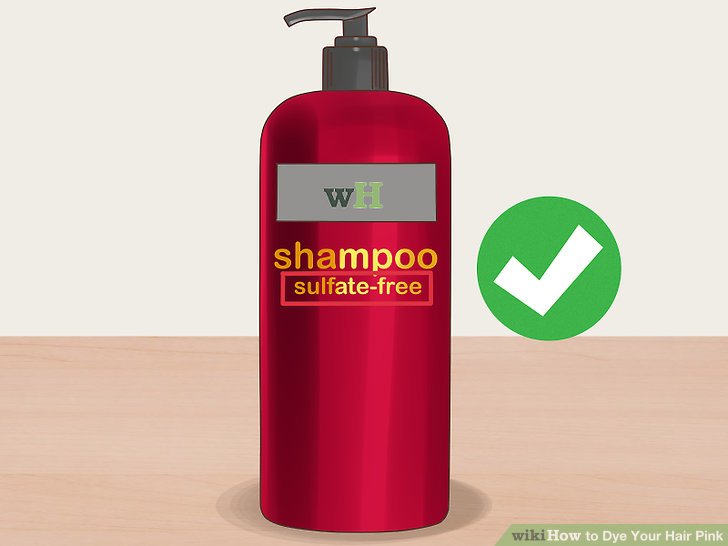
Use colourfast, sulfate-free products. Do not use products that contain sulfates. Sulfates are great for cleaning your hair, but they can also strip color from your hair. If you want your color to last longer, stick with color-safe, sulfate-free shampoos and conditioners. Most products will state on the label whether they are colorfast or sulfate-free. If you’re not sure, check the ingredients list on the back of the bottle. Avoid anything with the word “sulfate” in it.
Add some of your dye to your conditioner bottle. This will release a little color into your hair every time you wash it and the color will last longer.
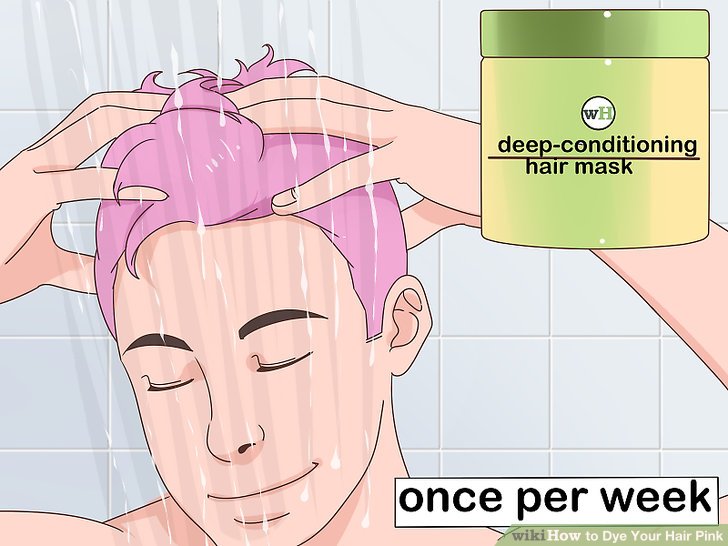
Condition your hair with a hair mask once a week. Purchase a deep conditioning mask for colored or chemically treated hair. Apply the mask to damp hair, then tuck your hair under a plastic shower cap. Wait for the time on the packaging and then rinse the mask.
Most hair masks need to be left in your hair for 5 to 10 minutes, but some need to be left in for 15 to 20 minutes. Read the label, but don’t panic if you leave the mask on for too long.
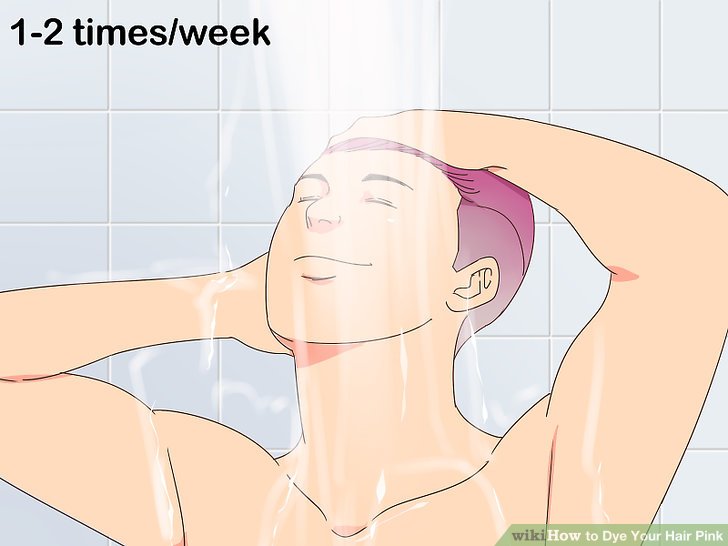
Wash your hair once or twice a week at most. The more you wash your hair, the faster it will fade—even with a sulfate-free, color-safe shampoo and conditioner. If your hair tends to get oily or greasy, consider using a dry shampoo between washes.
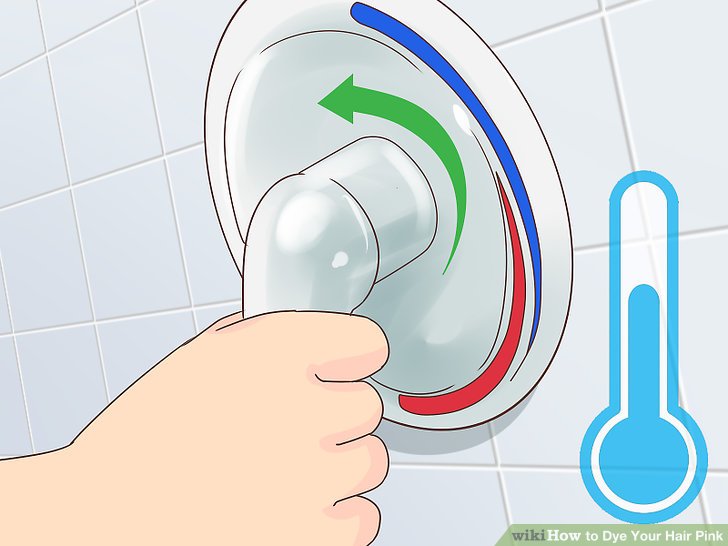
Use cool water when washing your hair. Similar to heat styling, hot water can cause the color to fade out of your hair faster. It can also make your hair appear damaged. After you are done shampooing and conditioning your hair, rinse your hair with cold water for 1 minute to add extra softness and shine.
If you can’t tolerate cold water, use lukewarm water instead.
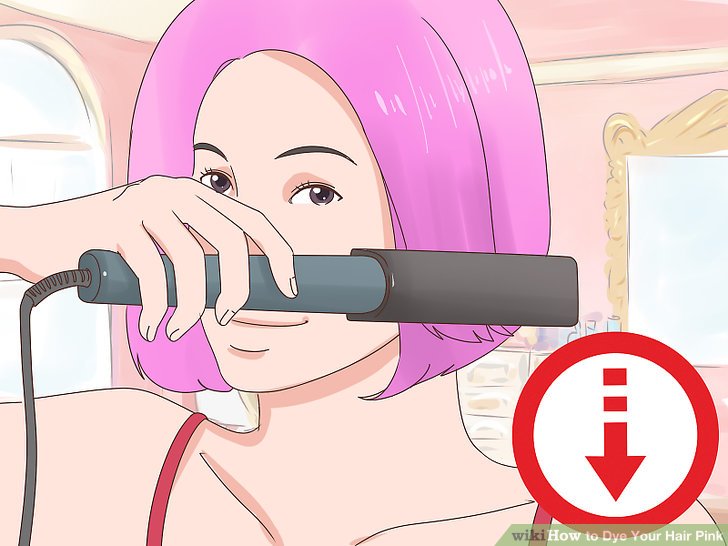
Limit heat styling when possible. Unless it’s freezing outside and you’re late for work or school, let your hair air dry. If you want to curl your hair, look for a method that doesn’t require heat, such as curling. B. Foam curlers. Avoid straightening your hair if possible.
If you must use a flat iron or curling iron, make sure your hair is completely dry first. Apply a good heat protectant and use a lower heat setting.
The sun can also fade the color. Wear a hat, scarf, or hood when you go outside.
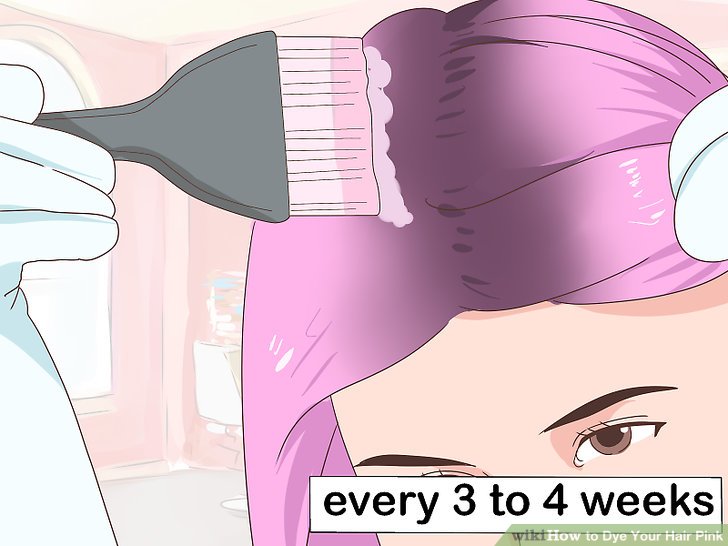
Refresh your hair every 3 to 4 weeks or as needed. Similar to red hair color, pink hair color fades quickly. This means you may also need to re-bleach your roots if they start to show. If you don’t want to bleach your roots again, leave them natural and instead re-dye the ends for an ombre effect.
The lighter your pink, the more noticeable the fading will be. Pastel pink doesn’t fade easily.
Some people like the pastel shade that their pink color fades to. If you like the shade it fades to, then don’t touch it that often.
- Choosing the right shade
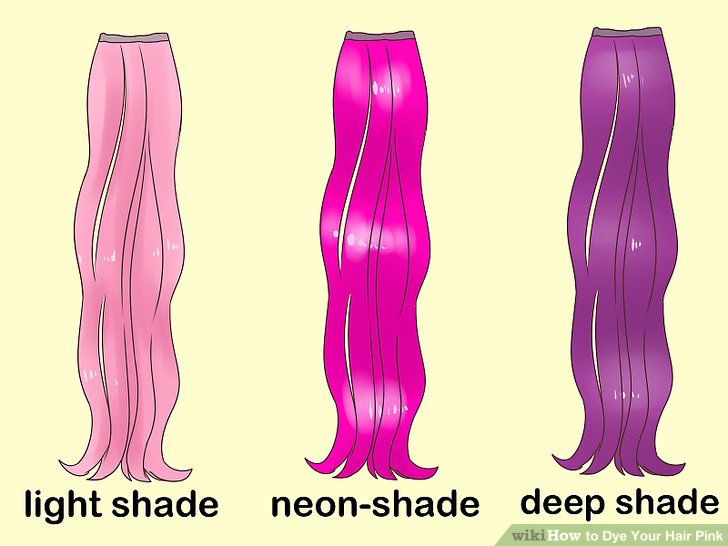
Decide how light or dark you want your hair to be. Pink comes in many different shades, from very pale to very dark. Each shade has its own benefits and will do different things to your overall look. For example:
Try a light shade if you want something that’s easy to work with and maintain. Examples are: baby, cotton candy, pale and pastel.
Try a bright neon shade if you want longer-lasting coloring. Examples are: Atomic, Carnation, Cupcake, Flamingo, Magenta and Shocking.
Stick to a deep shade if you have dark hair and can’t bleach it light enough. Examples are: bordeaux, aubergine, violet and virgin rose.
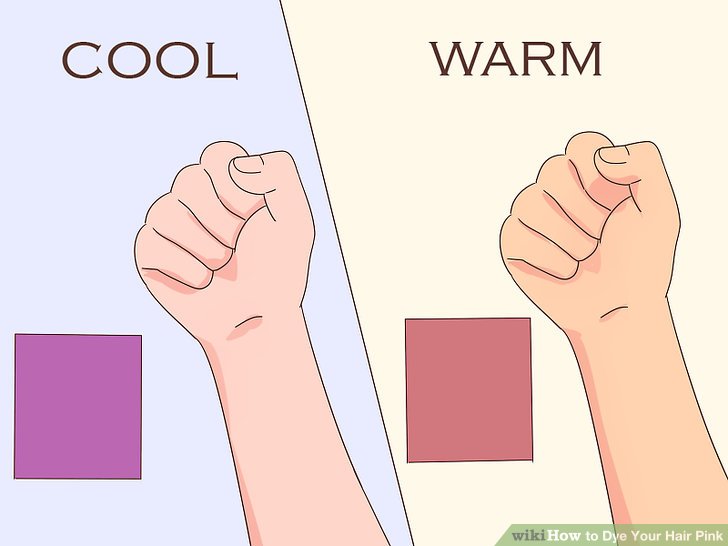
Choose a shade that flatters your skin’s undertones. In most cases, you should match the tone of your hair to your skin’s undertone. For example, if your skin has a warm (yellow) undertone, choose a warm shade of pink with orange or yellow tints. If your skin has cool (pink) undertones, stick with a cool shade of pink with hints of purple or blue.
If you can’t decide on a color, go to a wig shop and try on wigs of different shades.
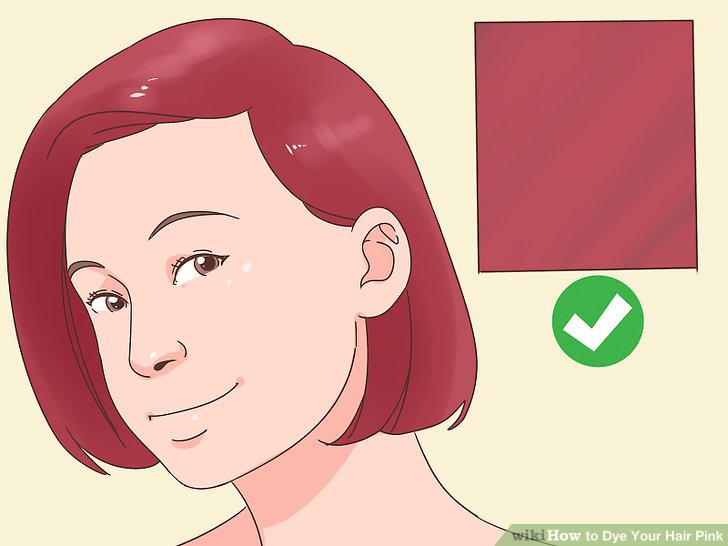
Compromise and go for a darker shade if you have dark hair. In most cases, you will need to bleach your hair. However, remember that you can only bleach your hair so much. In these cases, you may have to settle for a darker shade of pink. For example, if you have dark brown or black hair, you may not be able to bleach it light enough to get a pastel pink shade. You may have to settle for a darker shade of pink instead.
It’s harder to bring out the color of dark hair than light hair, even with bleach.
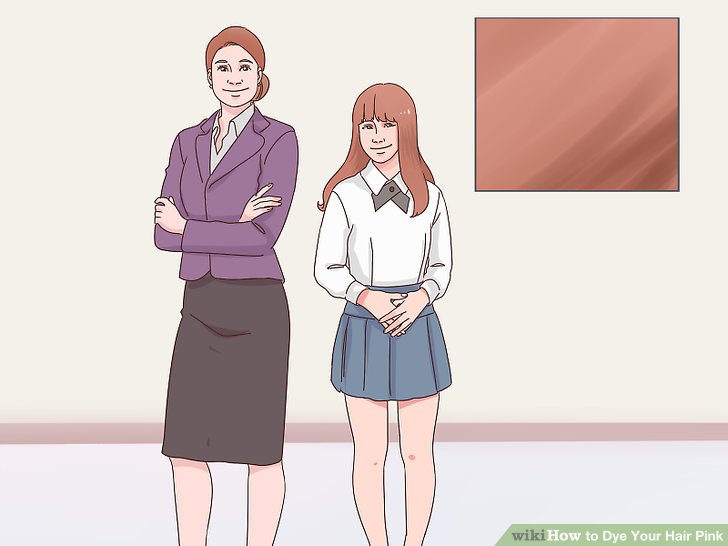
Choose a shade that matches your school or work attire. If you work in a professional environment with a strict dress code, this light shade of pink may not be the best choice and may earn you a mention – the same goes for schools. If you work in an environment that encourages creativity (such as an art studio or art school), then your pink locks might make you feel right at home.
If your school or job has a strict dress code, consider a more natural shade of pink, such as pink. e.g. rose gold.
Check with your client/employer if the color you want is acceptable.


